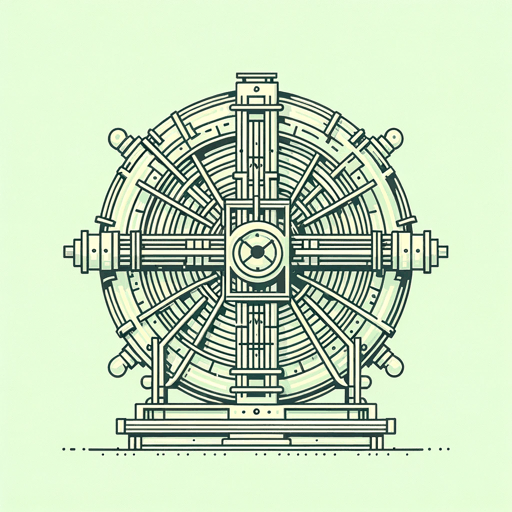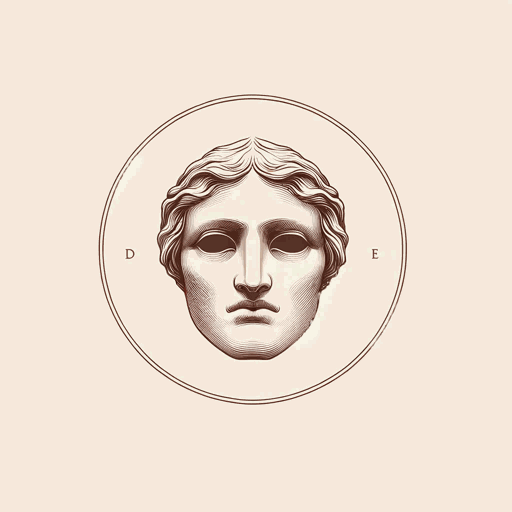0 pages • 0 minutes read
Dan BrownThe Da Vinci Code
Fiction | Novel | Adult | Published in 2003A modern alternative to SparkNotes and CliffsNotes, SuperSummary offers high-quality Study Guides with detailed chapter summaries and analysis of major themes, characters, and more.
Summary and Study Guide
Overview
The Da Vinci Code by Dan Brown was originally published in 2003 and has become an international bestseller, with sales of over 80 million. It was made into a popular movie starring Tom Hanks, Audrey Tatou, and Ian McKellen. The novel is Brown’s fourth, a fast-paced thriller with political, historical, and religious overtones. Its initial release generated controversy for perceived condemnation of the Catholic Church and historical inaccuracies. Despite the charges, The Da Vinci Code remains one of the bestselling works of fiction ever made.
The novel has a character who is referred to as “The Albino,” an offensive characterization of people with albinism.
Plot Summary
Renowned Harvard symbologist Robert Langdon is in Paris for a lecture. Bezu Fache, a detective with the French Judicial Police, summons him to the Louvre. The Louvre curator, Jacques Sauniére, has been murdered, a cryptic message written next to the body alongside Langdon’s name. Langdon had been scheduled to meet with Sauniére earlier that evening, and he senses Fache considers him the prime suspect. While Fache questions Langdon, agent Sophie Neveu, a cryptologist, bursts into the museum gallery. Pretending to have important information for Langdon, she bustles him into a bathroom where she informs him that Sauniére was her grandfather and that his messages were intended for her.
Silas, a monk with the conservative Catholic sect, Opus Dei, is the man responsible for Sauniére’s murder—as well the murder of three others, all members of the secretive Priory of Sion. He visits a church where he believes a relic of great power—the Priory’s keystone—is hidden. After smashing through a floor tile, he realizes the Priory brethren have all told him the same lie. The keystone is not there.
At the Louvre, Sophie finds a hidden tracking device in Langdon’s coat. She buries it in a bar of soap and throws it out the window where it lands in the back of a truck. As the truck drives away, Fache and his lieutenant, Collet, believe Langdon is fleeing. As they chase the errant tracking device, Langdon and Sophie sneak into the gallery in which the Mona Lisa is displayed. There, Sophie discovers another clue left by her grandfather: a key.
After leaving a trail of false leads to throw off Fache and Collet, Langdon and Sophie discover an address written on the key in invisible ink. The address leads to a Swiss Depository Bank. The key allows them entrance into the high security bank. They are brought to a subterranean vault where they retrieve Sauniére’s safety deposit box. Inside is a white stone cylinder with a coded lock, a cryptex. Unsure how to open it, Langdon suggests they turn to British Royal Historian Leigh Teabing for help after the bank’s manager, André Vernet, helps them escape the police.
While Silas ponders his next course of action, his mentor, Bishop Aringarosa, the leader of Opus Dei, flies to Rome to meet with several Vatican officials. Having been informed five months earlier that the Vatican, once a champion of Opus Dei, would no longer give its support, Aringarosa makes a power play. Intending to recover the keystone and use its power to make Opus Dei a major player once again, he obtains 20 million euro in exchange for the promised keystone.
Langdon and Sophie drive to Château Villette, Teabing’s estate, where the historian greets them, curious about their claims of Grail information. There, Sophie confesses that her grandfather was the Priory Grand Master. Langdon and Teabing explain that the Priory’s centuries-old charge is to protect the “Sangreal” documents, evidence of Jesus Christ’s mortality and his marriage to Mary Magdalene, a truth that has been buried by the Church since the third century but hints of which have appeared discreetly in some of Da Vinci’s most famous works of art.
On a tip from the mysterious and anonymous “Teacher,” Silas also finds his way to Teabing’s estate where he breaks in and, at gunpoint, demands the keystone. Sophie and Teabing overpower him and take him prisoner. Langdon, Sophie, Teabing, and Teabing’s butler Rémy drive to a small, private airfield where Teabing’s personal plane waits to fly them to England.
After playing catch-up for most of the night, Fache and Collet arrive at Château Villette. They try to piece together the seemingly random clues when Fache receives word that Teabing’s plane has departed France without a flight plan. In pursuit, he charters his own plane to England. Meanwhile, Collet’s team finds a sophisticated electronic surveillance station in Teabing’s barn, the means by which Rémy has been eavesdropping on the Priory.
Teabing’s plane lands in Kent. Having been alerted by Fache, the local police intercept them but find only Teabing and Rémy (the others are hiding in Teabing’s limo inside the hangar). With no evidence and not wanting to offend an important client, the police let them go. They drive to the Temple Church in London, a pagan-style sanctuary built by the Knights Templar. Having opened the first cryptex—only to find a second one inside—they search for a “knight’s tomb” that will point the way to the Holy Grail. The Temple Church, however, is a false lead. Silas, meanwhile, having been freed from his bonds by Rémy, bursts into the church and, with Rémy’s help, they take Teabing prisoner.
Langdon and Sophie, desperate to help Teabing, try to reach the knight’s tomb first to give themselves leverage over Silas and Rémy. They finally deduce that the tomb is located in Westminster Abbey. The Teacher, after disposing of Rémy and sending Silas away to an Opus Dei residence, gets there first. He leaves them a note directing them to an isolated part of the building where he reveals himself at last: Teabing is the Teacher, the master manipulator who directed the killing of the Priory brotherhood and sent Silas on his quest to recover the keystone. Teabing wants the Sangreal documents released to reveal the foundational lie on which the Church is built, but he fears the Priory will keep them secret.
On a tip from Teabing, the British police storm the Opus Dei residence looking for Silas in connection with the four murders in France. While fleeing the police, Silas is shot. He then accidentally shoots his mentor, Aringarosa, who is trying to prevent him from committing further violence. Aringarosa recovers, but Silas dies in a nearby park.
Teabing holds Langdon and Sophie at gunpoint, demanding the cryptex. Langdon, having deciphered the password, secretly opens the cryptex and conceals the scroll in his pocket. He closes it and tosses it away, shattering the vial of vinegar inside, which Teabing believes will dissolve the scroll. Distraught, he loses his gun just as Fache and a team of British police arrive and arrest him. Langdon reveals to Sophie the scroll which directs them to Rosslyn Chapel in Scotland. Inside, they find the sanctuary covered with sacred symbols, but they are still no closer to the Grail. Inside the Chapel’s rectory lives an old woman with an astonishing secret: She is Sophie’s grandmother and the Chapel’s docent is her grandson, Sophie’s brother. Sophie had been told all her life that her brother was killed with her parents years ago, but in fact, her parents’ death was a warning to Sauniére that Sophie’s life might be in danger as well. As Priory Grand Master, Sauniére and his wife know the truth about their family: they are the descendants of Jesus and Magdalene’s royal bloodline, a truth the Church would likely kill to cover up.
Langdon leaves Sophie with her family and returns to France. In his hotel room, he has an epiphany. Stepping outside, he follows the city’s “Rose Line,” a series of medallions embedded into the sidewalk that trace a north-south longitudinal axis through the city. The path leads him to the Louvre, its famous inverted pyramid. In the underground chamber below the pyramid lies another, smaller pyramid, pointing skyward, a mirror image of the first—the symbolic chalice and blade, the masculine and feminine. There, beneath the museum’s vast chamber lies the fabled Sangreal documents and the remains of Mary Magdalene, the proof of Jesus’s true message: reverence for the divine feminine.
Related Titles
By Dan Brown
Featured Collections
Art
View Collection
Challenging Authority
View Collection
Good & Evil
View Collection
Horror, Thrillers, & Suspense
View Collection
Mystery & Crime
View Collection
Power
View Collection
Religion & Spirituality
View Collection
Safety & Danger
View Collection
Trust & Doubt
View Collection
Truth & Lies
View Collection







